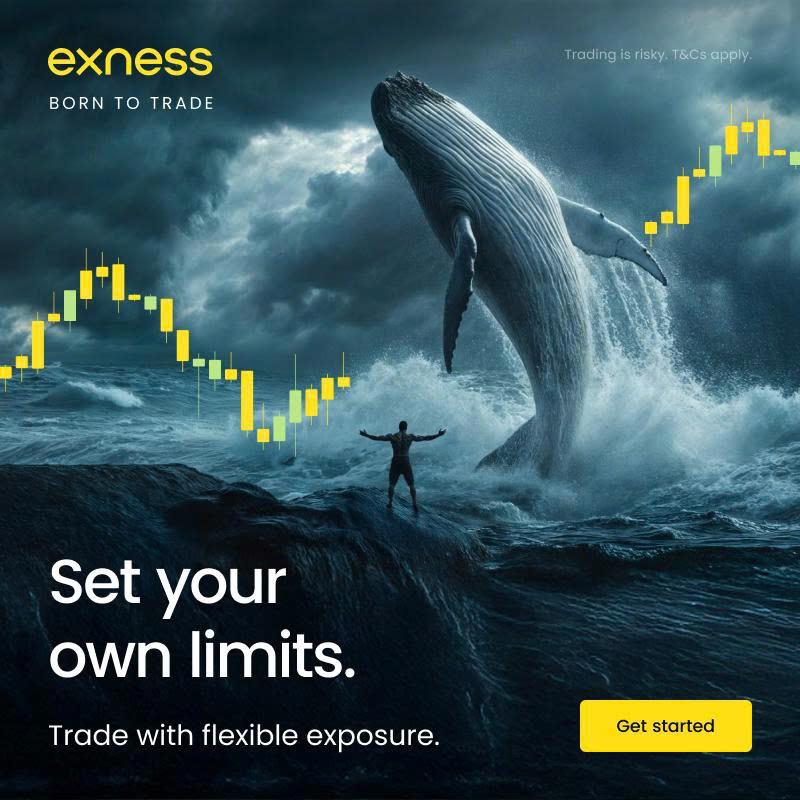
8 minute read
Best Forex Trading Strategy for Beginners: A Comprehensive Guide
So, you’re new to forex trading and wondering, “Best forex trading strategy for beginners?” The answer is straightforward: a simple, disciplined strategy that prioritizes risk management and consistency over chasing big wins. For beginners, the trend-following strategy paired with strong money management rules is the most effective way to start. Why? It’s easy to understand, reduces emotional stress, and leverages the market’s natural movements. In this guide, I’ll walk you through this strategy, explain why it works, and share practical tips to help you trade confidently without losing your shirt.
Top 4 Best Forex Brokers
1️⃣ Exness: Open An Account or Visit Brokers 🏆
2️⃣ XM: Open An Account or Visit Brokers 💥
3️⃣ JustMarkets: Open An Account or Visit Brokers ✅
4️⃣ Quotex: Open An Account or Visit Brokers 🌐
Why Trend-Following Is Perfect for Beginners
Forex trading can feel like a jungle—charts, indicators, and jargon everywhere. As a beginner, you don’t need a complex strategy that requires a PhD in finance. Trend-following is ideal because it’s intuitive: you trade in the direction the market is already moving. Prices tend to move in trends—up, down, or sideways—and riding these waves is safer than trying to predict reversals.
The beauty of trend-following is that it keeps things simple. You’re not guessing where the market might go; you’re following where it’s already going. Plus, it works across different timeframes, so whether you’re trading part-time or glued to your screen, you can make it fit your schedule.
Step-by-Step: How to Use the Trend-Following Strategy
Let’s break down how to apply this strategy. I’ll keep it practical, with steps you can actually follow.
1. Pick a Currency Pair
Start with a major currency pair like EUR/USD or GBP/USD. These pairs are liquid, meaning they have tight spreads and less volatility compared to exotic pairs. For beginners, sticking to one or two pairs helps you focus and learn their behavior without feeling overwhelmed.
Pro Tip: EUR/USD is the most traded pair globally, with plenty of price movement to practice spotting trends.
2. Choose Your Timeframe
Your timeframe depends on how much time you can dedicate to trading. If you’re busy, use daily (D1) or 4-hour (H4) charts. These require less monitoring and reduce the noise of short-term price fluctuations. If you’re more hands-on, the 1-hour (H1) chart is a good middle ground.
Why this matters: Higher timeframes filter out random price spikes, making trends clearer for beginners.
3. Identify the Trend
To spot a trend, use two simple tools: Moving Averages (MAs) and trendlines.
Moving Averages: Add a 50-period and 200-period Simple Moving Average (SMA) to your chart. If the 50-SMA is above the 200-SMA, you’re in an uptrend. If it’s below, it’s a downtrend. This is called the “Golden Cross” (bullish) or “Death Cross” (bearish).
Trendlines: Draw a line connecting at least two higher lows in an uptrend or two lower highs in a downtrend. This visually confirms the trend’s direction.
Example: On a daily EUR/USD chart, if the price is making higher highs and higher lows, and the 50-SMA is above the 200-SMA, you’ve got a solid uptrend.
4. Wait for a Pullback
Don’t just jump in when you see a trend—it’s like chasing a moving train. Wait for a pullback, where the price temporarily moves against the trend. This gives you a better entry price and reduces risk.
Use the Relative Strength Index (RSI) to time your entry. An RSI below 30 in an uptrend (or above 70 in a downtrend) often signals a pullback. When the RSI starts moving back toward the middle (around 40-50), it’s a good time to enter.

✅ Trade with Exness now: Open An Account or Visit Brokers 👈
5. Set Your Entry, Stop Loss, and Take Profit
Entry: Enter a buy trade in an uptrend after a pullback, or a sell trade in a downtrend. Confirm your entry with a candlestick pattern like a bullish engulfing candle (for buys) or bearish engulfing (for sells).
Stop Loss: Place your stop loss below the recent low in an uptrend (or above the recent high in a downtrend). A good rule of thumb is 1-2% of your account balance per trade.
Take Profit: Aim for a risk-to-reward ratio of at least 1:2. For example, if your stop loss is 20 pips, your take profit should be at least 40 pips.
Example: In an uptrend on EUR/USD, you buy at 1.1000 after a pullback, set a stop loss at 1.0980 (20 pips), and aim for a take profit at 1.1040 (40 pips).
6. Manage Your Risk
This is the golden rule of forex trading: never risk more than 1-2% of your account on a single trade. If your account is $1,000, that’s $10-$20 per trade. This ensures you can survive a string of losses without blowing your account.
Use a position size calculator (available on most trading platforms like MetaTrader) to determine how many lots to trade based on your stop loss and risk percentage.
Why This Strategy Works for Beginners
The trend-following strategy is beginner-friendly for three reasons:
It’s Simple: You don’t need to master dozens of indicators. Moving averages, trendlines, and RSI are enough to get started.
It Reduces Emotional Trading: By following clear rules (e.g., only trade in the trend’s direction), you avoid impulsive decisions driven by fear or greed.
It’s Versatile: You can apply it to any currency pair and timeframe, making it adaptable to your lifestyle.
Common Mistakes to Avoid
Even the best strategy won’t work if you fall into these traps:
Overtrading: Stick to 1-3 high-quality setups per week. More trades don’t mean more profits.
Ignoring Risk Management: Skipping stop losses or risking too much per trade is a fast track to losing your account.
Chasing the Market: Entering trades without waiting for pullbacks often leads to buying high or selling low.
Not Practicing First: Use a demo account to test this strategy for at least 1-2 months before trading real money.
Tools and Platforms to Get Started
To execute this strategy, you’ll need:
A Broker: Choose a reputable broker like XM, IC Markets, or Pepperstone. Check for low spreads, fast execution, and regulation (e.g., FCA, ASIC).
Trading Platform: MetaTrader 4 or 5 (MT4/MT5) is beginner-friendly and widely used. Most brokers offer it for free.
Charting Tools: Platforms like TradingView offer free charting with moving averages and RSI. You can also use your broker’s built-in tools.
Education Resources: Follow free resources like Babypips.com or YouTube channels like The Trading Channel for tutorials on trend-following.
How to Stay Disciplined
Discipline is the difference between a losing trader and a winning one. Here’s how to stay on track:
Create a Trading Plan: Write down your rules (e.g., only trade uptrends, risk 1% per trade) and stick to them.
Keep a Trading Journal: Log every trade, including entry/exit points, reasons for the trade, and outcome. Review it weekly to spot patterns.
Avoid Revenge Trading: If you lose a trade, don’t double down to “win it back.” Take a break and stick to your plan.
Set Realistic Goals: Aim for consistent small gains (e.g., 1-2% per month) rather than dreaming of overnight riches.
Scaling Up: Next Steps After Mastering the Basics
Once you’re comfortable with trend-following, you can refine your strategy:
Add Indicators: Experiment with tools like the MACD or Bollinger Bands to confirm trends.
Trade Multiple Pairs: Expand to other major pairs like USD/JPY or AUD/USD for more opportunities.
Learn Price Action: Study candlestick patterns and support/resistance levels to improve your entries and exits.
Backtest Your Strategy: Use historical data to test how your strategy would’ve performed in the past. This builds confidence.
FAQs About Forex Trading for Beginners
Q: How much money do I need to start forex trading?A: You can start with as little as $100-$500 with a micro account. However, $1,000 gives you more flexibility to manage risk effectively.
Q: How long does it take to become profitable?A: It varies, but most traders need 6-12 months of practice on a demo account and disciplined trading to see consistent results.
Q: Can I trade forex part-time?A: Absolutely! Use higher timeframes like H4 or D1 to trade with just a few hours per week.
Q: Is forex trading risky?A: Yes, but proper risk management (like using stop losses and risking only 1-2% per trade) minimizes the danger.
Final Thoughts: Start Small, Stay Patient
The trend-following strategy is the best forex trading strategy for beginners because it’s simple, effective, and keeps you out of trouble. By focusing on major currency pairs, using moving averages and RSI, and prioritizing risk management, you’ll build a strong foundation for success. Forex trading isn’t a get-rich-quick scheme—it’s a skill that rewards patience and discipline. Start with a demo account, practice this strategy, and track your progress. Before you know it, you’ll be trading with confidence and seeing results.
✅ Trade with Exness now: Open An Account or Visit Brokers 👈
Read more:

